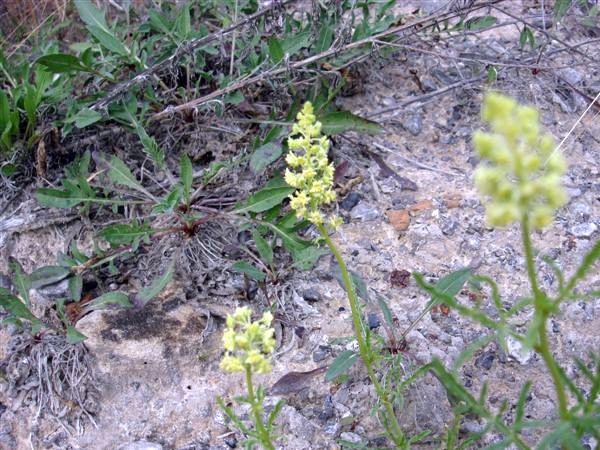
Last weekend Bob Machesney and Mike Fialkovich were hiking near Slippery Rock Creek in Lawrence County when Bob found some unusual flowers growing on a gravel heap.
Mike knows a lot about plants but these flowers were new to him so he took some pictures — the first two photos shown here — while Bob collected an identification sample for his wife, Dianne.
Dianne identified the plant as wild mignonette (Reseda lutea) and Bonnie Isaac, Botany Collection Manager at the Carnegie Museum of Natural History, confirmed that this is indeed a rare find in western Pennsylvania. It’s a County Record for Lawrence County.

Resada lutea is a biennial or short-lived perennial native to Eurasia that grows in well-drained chalk or limestone soils. It can spread by root cuttings or seed but it won’t start to grow until the soil is disturbed. At full height the plant is one to two feet tall.
Blooming from June through September, the flowers have unusual shapes as you can see in this Wikimedia close-up.

Wild mignonette is rare in western Pennsylvania because we don’t have well-drained limestone soil.
It found a home on a gravel heap in Lawrence County, the only well-drained limestone for miles.
(photos by Mike Fialkovich. Closeup from Wikimedia Commons; click on the image to see the original)
Since this is non-native are we supposed to react in any special way?
Ramona, I don’t know. Others seem to be excited about it. I am most impressed that it found this unique habitat. Perhaps it’ll be an indicator of rare natives at the same gravel heap.